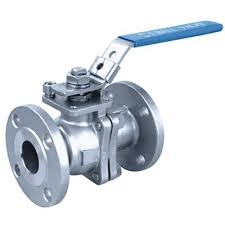Industrial valves are similar to domestic valves but tend to be larger and made from more robust materials to protect them from the harsh elements in which they are used. Let’s take a look at five of the most commonly used types of industrial valves.
1. Gate valves
Gate valves are linear motion valves. They use a closure element (the gate), which either blocks or permits the flow. These are usually operated by a handwheel, actuator, or T-key. Gate valves are used in wastewater systems and other settings in which either full flow or no flow is needed.

2. Globe valves
Another type of linear motion valves, globe valves can stop, start, or regulate the flow of fluids. These valves have a globe-like structure, hence the name, and are operated either automatically or manually by turning the attached handwheel. Globe valves are probably the most popular type of industrial valves due to their versatility, durability, short closing time, and suitability for high-temperature and high-pressure applications.
3. Ball valves
Ball valves are very simple and are used for on/off flow actions. The flow rate can be controlled by partially opening or closing the valve, which is controlled by a handle, while the start/stop of the flow is controlled by the disc, which is a hollow ball shape. This type of valve can be used for liquids, gases, or vapours. Ball valves are easy to use, efficient, and low maintenance.

Valve specialists
Specialists such as Orseal industrial valves know valves inside out; therefore, they can provide lots of advice and bespoke products.
4. Butterfly valve
These valves use a rotating metal disc and can stop, start, or regulate the flow. A member of the ‘quarter-turn’ valve family, butterfly valves are popular due to their precision and reliability. This makes them well-suited to a variety of applications.
5. Check valves
Check valves, also known as non-return valves, are designed in a way that allows flow in one direction only. They are used in applications in which it is crucial to prevent backflow, such as wastewater management systems, gas lines, and manufacturing.
